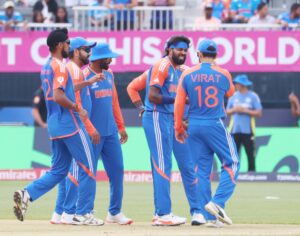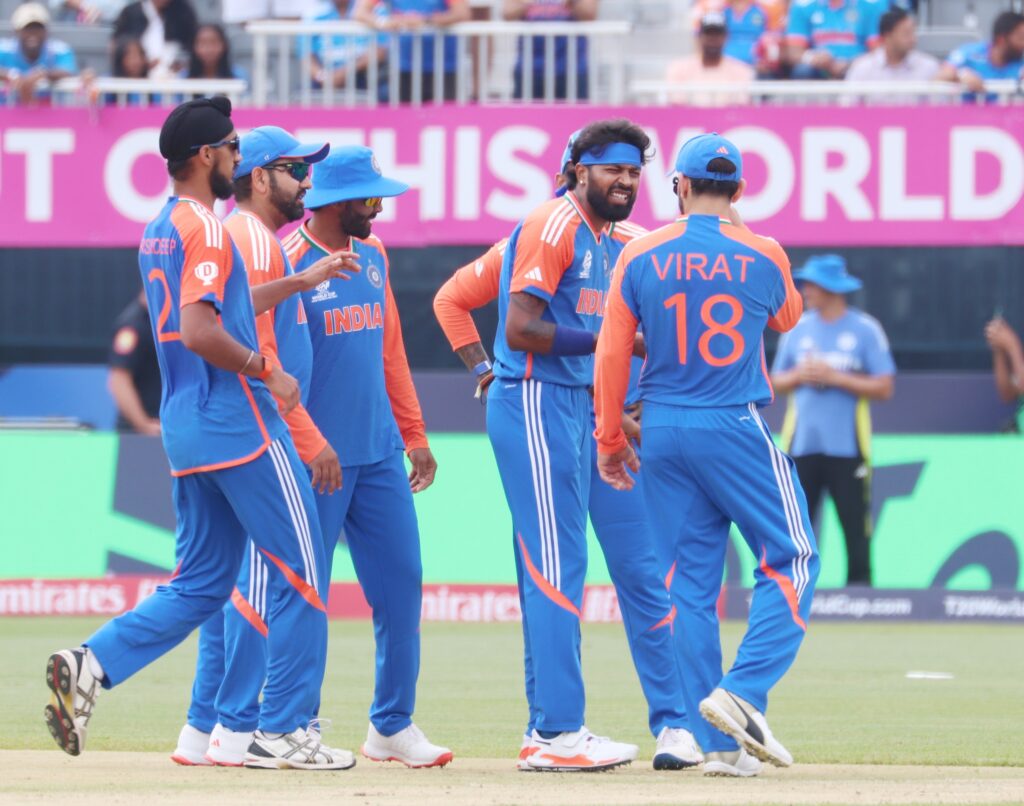
Looking at the bigger picture, India probably would have liked to be stretched a bit more by Ireland. As it turned out, it was a walk in the Eisenhower Park. From a team perspective, it’s difficult to learn virtually anything from a game where the opponent gets bowled out for 96 in 16 overs. But for a side like Ireland who don’t have that much experience at the highest level, the degree of difficulty was pretty high.
India sauntered to 97/2 in 12.2 overs to win the match by eight wickets, with 46 balls to spare. Rohit Sharma retiring hurt was their only issue of concern.
As expected, India went in with a four-pronged pace attack, including Hardik Pandya as an all-rounder. And the seamers shared eight wickets between them. Pandya was the most successful, claiming 3/27 in his four overs. Jasprit Bumrah and Arshdeep Singh bagged two apiece and Mohammed Siraj one. The other two wickets were down to Axar Patel’s brilliant caught-and-bowled to account for Barry McCarthy, and the run-out of Gareth Delany. India had wrapped up the game in the first-half.
Vast swathes of empty seats greeted the two teams, as Rohit won the toss and sent Ireland in. India playing a World Cup fixture in front of a sparse crowd usually doesn’t happen, and the ICC would hope for a far better turnout for the showpiece India-Pakistan game on June 9. Else, the US-leg of the T20 World Cup would be a flop.
The world body is already copping flak for the pitch and outfield of the Nassau County International Cricket Stadium, and rightly so. This game was played on Pitch No. 4 and it troubled the batters with its variable bounce. A couple of days ago, on Pitch No. 1, Sri Lanka were bundled out for 77 against South Africa. There’s no harm in producing a seamer-friendly pitch, but things become complicated when it offers variable bounce right from the outset. Also, the lateral movement was exaggerated and wasn’t in accordance with what the spectators expect in T20 format.
As regards to the outfield, it is soft and slow, with puffs of sand coming out. Players would be extra cautious to protect their knees and hamstring on such a turf.
Coming back to the match, Arshdeep’s double-wicket over upfront pegged Ireland back and they never recovered. Paul Stirling looked to heave a length ball on middle and leg over square-leg, got a leading edge and Rishabh Pant took the skier running back. Andy Balbirnie was castled by a delivery that moved away. He stayed beside the line to play a shot on the off, but ended up being in no position to play the shot. Ireland limped to 26/2 at the end of the Powerplay.
Then, Pandya and Bumrah got into the act. At 50/8, Ireland were in danger of being bowled out for less than 100 and it eventually happened. Delany’s 26 off 14 balls that had a couple of fours and as many sixes, gave the Irish fans something to cheer about. On a tricky pitch, the Ireland batters didn’t have the technique to counter India’s bowling.
India, meanwhile, appeared settled on their batting order. Virat Kohli opened with Rohit and Pant came in at No. 3. The latter batted at No. 3 in the warm-up game against Bangladesh as well and going ahead, this is likely to be the team’s preferred top order.
Kohli, who didn’t play the warm-up match, got out for 1, falling prey to a premeditated charge against Mark Adair. The pitch got the better of him as well. Rohit was dropped at second slip in the first over. He went on to score 52 off 37 balls before retiring hurt. The captain trudged off the field, gesturing to his shoulder. At the end of the match, however, Rohit allayed the fear, saying: “Just a little sore.”
Pant added 54 runs with Rohit for the second wicket and remained unbeaten on 36 off 26 deliveries. Suryakumar Yadav got out cheaply, but by then, the game was done and dusted.




